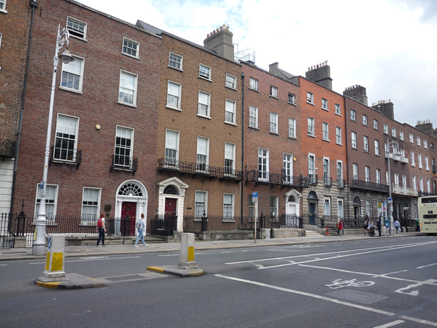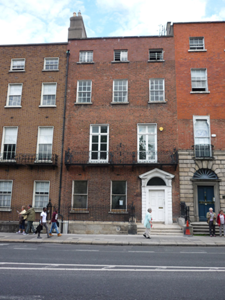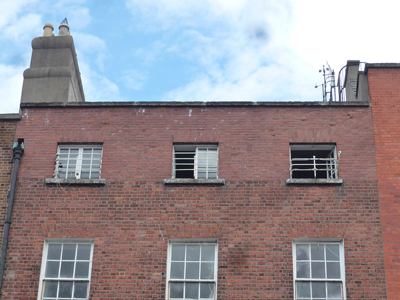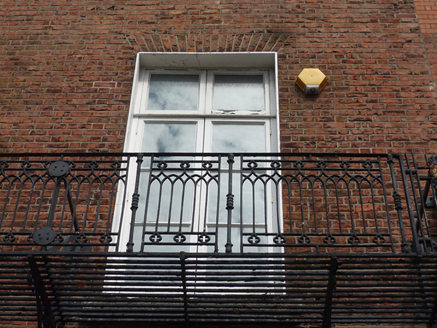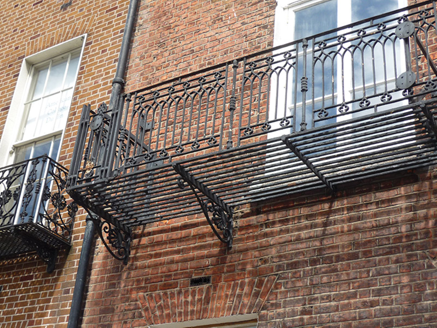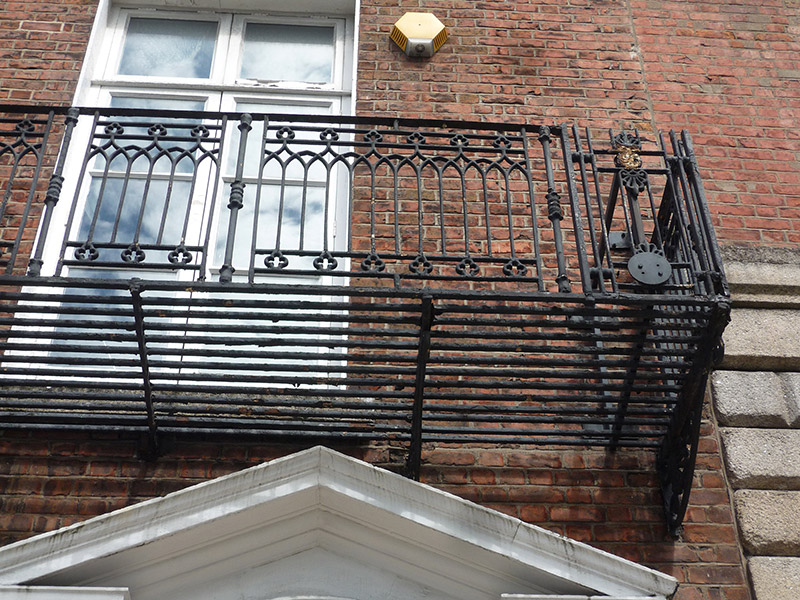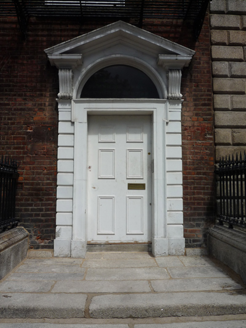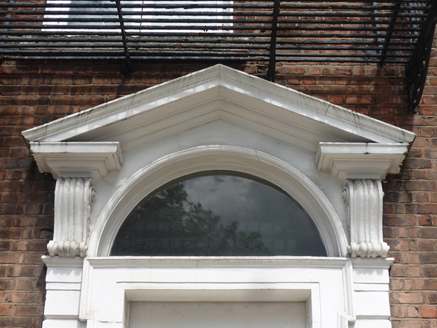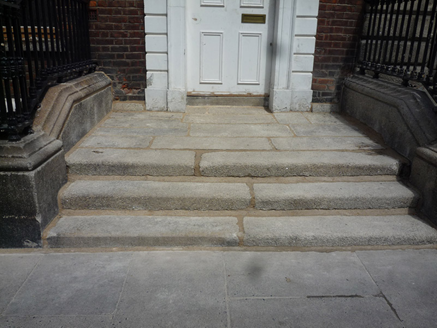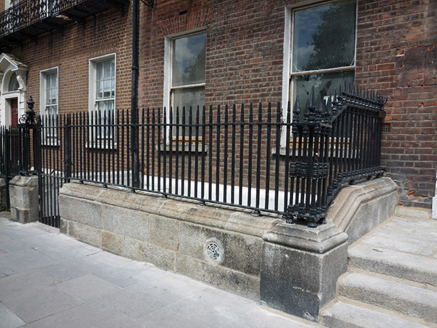Survey Data
Reg No
50100351
Rating
Regional
Categories of Special Interest
Architectural, Artistic
Original Use
House
In Use As
Office
Date
1760 - 1765
Coordinates
316606, 233715
Date Recorded
29/07/2016
Date Updated
--/--/--
Description
Attached three-bay four-storey former house over basement, built c. 1762, with two-bay first floor, and having two-storey return to rear with one canted-bay to east elevation. Pitched slate roof to front part, and two pitched roofs to rear perpendicular to street, narrower to east and having hips to rear, with reconstructed Flemish bond brown brick parapet with granite coping, shouldered rendered chimneystacks with clay pots, and concealed gutters; cast-iron downpipe to west; hipped slate roof to return with chimneystack. Flemish bond brown brick walls, reconstructed at top floor level, with painted granite plinth; rendered walling to basement and to rear. Square-headed window openings, diminishing in height to upper floors, with painted rendered reveals, painted granite sills, and timber sliding sash windows, one-over-one pane to ground floor, six-over-six pane to second floor and replacement timber casements to other floors; apparently timber sash windows to rear with round-headed stairs window to east bay. Continuous decorative cast-iron balcony to first floor, and wrought-iron window-guards to top floor. Round-headed door opening with channelled rusticated pilasters and console brackets supporting open-bed pediment, and having lugged moulded architrave, plain fanlight and six-panel timber door with brass door furniture. Granite platform with three granite steps. Wrought-iron railings enclosing basement area with decorative wrought and cast-iron corner posts on moulded granite plinth wall. Replacement timber panelled door with adjoining fixed window provides internal basement access below bridged platform. Interior noted by Casey (2005) as retaining some original cornices and joinery.
Appraisal
Nos. 1-3 Merrion Square were built by John Wilson for Thomas Keating as part of the original development of the square, but No. 4 was his own personal investment. The relatively modest façade is enlivened by its unusual fenestration pattern, unique on the square, and an Adamesque-style door (identical to that at No. 3), while the decorative metalwork to its balcony and railings provides additional features of interest. No. 4, along with its neighbours, makes a strong contribution to the early character and intactness of Merrion Square. Laid out as part of the Fitzwilliam Estate, Merrion Square is one of the best-preserved Georgian streetscapes in in Ireland. The north, east and south sides of the square are lined with terraced houses of eighteenth and nineteenth-century date, while the west side is terminated by the garden front of Leinster House and the neighbouring Natural History Museum and National Gallery buildings. The terraced houses maintain a relatively uniform building height and design, attributed to standards promoted in Fitzwilliam's leases. Individuality was introduced through the design of doorcases, ironwork and interior decorative schemes.
